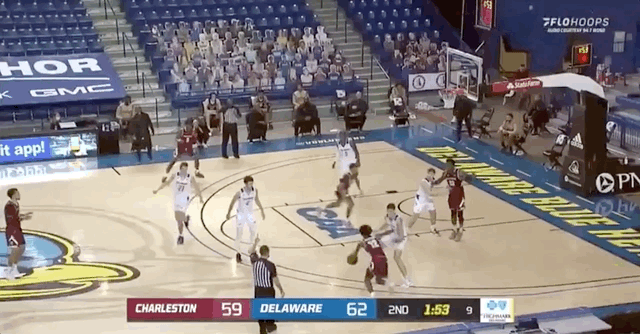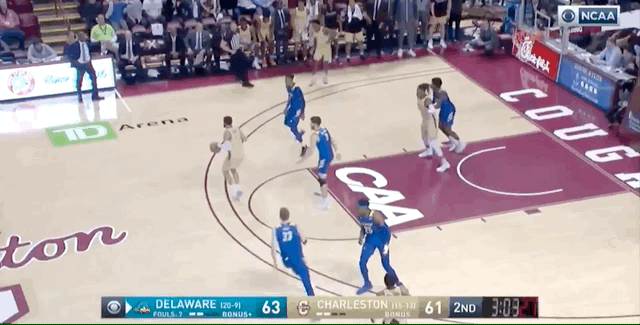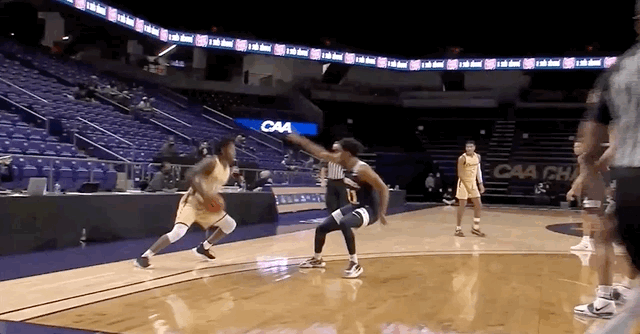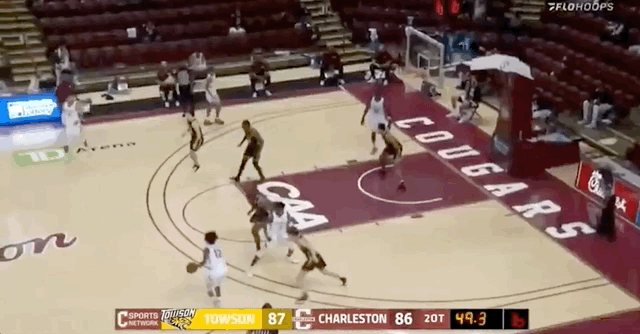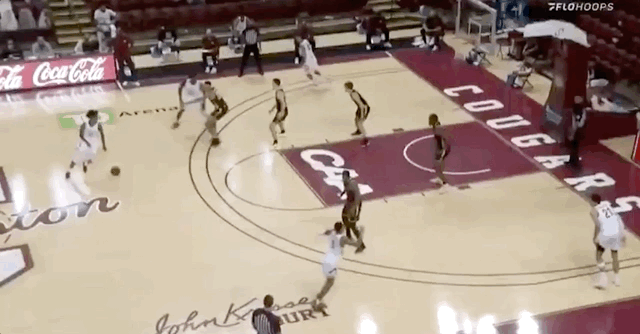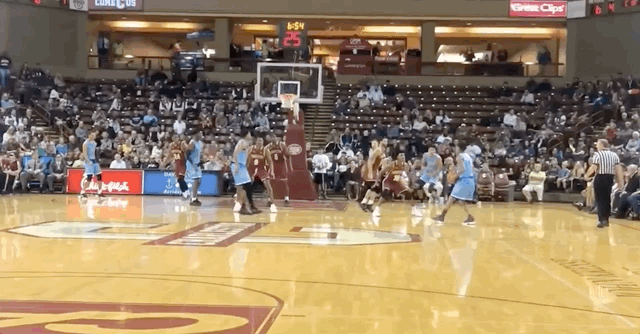What Auburn basketball is getting in Zep Jasper
The Tigers now have a transfer guard who can shoot from anywhere and has the well-earned nickname of "The Honey Badger."
Before we get started, special thanks to Drew Oldham and Jay Phillips over at AU Hoops Blog for letting me use some of Drew’s film cut-ups of Zep Jasper in this piece. Be sure to check out their excellent scouting report of Jasper and follow them both for more coverage of Auburn basketball’s offseason.
For a team that could have easily brought back all 12 scholarship players from the previous season, Auburn basketball is going through quite the roster overhaul.
Justin Powell, Jamal Johnson and Javon Franklin have all entered the transfer portal since the end of the Tigers’ 2020-21 season. JT Thor has declared for the NBA Draft with an option to return — but his announcement made it sound like he was ready to go pro now. Sharife Cooper is expected to test the draft waters as well and could very well be a lottery pick in a few months.
During all of this transition, Auburn picked up a commitment a couple of weeks ago from Zep Jasper, who spent the last three seasons with the College of Charleston. Jasper should be able to play immediately for the Tigers and could have up to two years of eligibility remaining.
A 6-foot-1 guard from Augusta, Ga., Jasper was a first-team All-CAA selection and a league All-Defense pick last season. That’s pretty impressive, considering the Cougars finished with a losing record and just cracked the top half of its conference standings.
Jasper has the ability to play both the point guard and shooting guard spots, which should only make the Tigers’ roster even more versatile in the 2021-22 season. At Charleston, he played in two-man backcourts where playmaking and scoring roles were mostly shared.
As a sophomore, he was in a backcourt with second-round NBA Draft pick Grant Riller, one of the top scoring weapons in all of mid-major basketball. Riller was the team’s top scorer and facilitator, and Jasper took on both of those responsibilities during his junior season. This past year, an early-season injury to senior guard Brevin Galloway put even more on Jasper’s plate.
According to College Basketball Reference, Jasper had a usage rate of 26.2% — a mark that would have only trailed Cooper on Auburn’s 2020-21 roster. (Allen Flanigan was at 23.6% for the season.) He took 28.5% of Charleston’s shots and more than doubled his scoring output to 15.6 points per game.
All of those shots can have a major impact on a player’s efficiency. However, Jasper had a PER of 21.2, which ranked sixth in the CAA. (Only Cooper had a higher mark on Auburn’s roster at 22.9.) He finished with a true shooting percentage of 54.9% and an effective field goal percentage of 51.4%. Among Auburn’s non-big men, only Flanigan posted better numbers.
Yes, it’s worth nothing that Jasper put up these numbers against mostly CAA competition and that the conference ranked 19th out of 32 Division I leagues on KenPom. The SEC will be a step up in quality. However, Jasper’s efficiency was pretty strong, even at a high usage rate — which bodes well for his chances at Auburn, once he’s surrounded by more talent.
He had an assist percentage of 18.1% last season, which is just a tick behind Flanigan’s mark. Perhaps most importantly for Auburn, he only had a turnover rate of 8.5%, which was among the best marks for high-usage guards in all of college basketball. His offensive rating of 114.8 is higher than any returning scholarship player on Auburn’s roster.
Thanks to the presence of Riller in his first two seasons and the overwhelming need to carry the scoring load last season, Jasper has been more of a bucket-getter than a distributor during his college days.
He has been described as a true three-level scorer, and the stats reflect it. According to Hoop-Math, Jasper shot 64.6% on shots at the rim last season — a good rate for a smaller guard.
He shot 34.5% from 3-point range, which would be the best returning mark on Auburn’s team in 2021-22 with the departures of Powell and Johnson.
Jasper is also an excellent free-throw shooter. After shooting 76.5% from the stripe as a freshman, he posted back-to-back seasons of 89.1% and 87.5% as a regular starter for the Cougars. That should help an Auburn team that was in the middle of the road nationally in free throw percentage a season ago.
There are two defining characteristics of Jasper’s game that make him a welcome upgrade to what Bruce Pearl is building with this roster.
The first is his ability to create his own shot. Jasper is a confident pull-up shooter who gets to his spots quickly and fires away. A lightning-fast stepback is his preferred weapon, and he can use it to get both 2-point and 3-point opportunities against his matchups.
Last season, the Tigers relied — sometimes to a fault — on point guards creating catch-and-shoot opportunities for the majority of their offense. When Cooper was clicking, it was fine. When he was out or he wasn’t at his best, the offense got stagnant in the halfcourt.
Jasper shot 43.8% on 2-point jumpers last season, and 36.0% percent of his shots were that type. In contrast, Auburn’s top player in that category last season was Powell, who took 26.7% of his shots from that range and only hit 27.8% of them.
While Pearl preaches “frees and threes” as the way he wants to run his offense, it makes great basketball sense. A 2-point jumper is the statistically the least valuable shot on the floor. But players who are comfortable at hitting them can unlock things for their teammates against strong defenses.
And a lot of Jasper’s jumpers come off the dribble. Only 10.3% of his 2-point jumpers were assisted, and only 42.1% of his 3-point attempts were assisted. That would be by far the lowest mark on Auburn’s team last season, as the Tigers relied primarily on catch-and-shoot opportunities form beyond the arc instead of pull-up looks.
And when Jasper gets hot, he has the ability to take over. He scored in the double-digits in all but three of his 17 games last season. Jasper scored more than 15 points in his last six outings, including a 38-point outing and a 27-point outing to finish the season. During that final six-game stretch, he hit 21 triples.
If Jasper can bring over that shot creation and streak-shooting capability to the SEC level, Auburn will have a dangerous offensive weapon who can play either guard spot off the bench at the very least. He looks like the type of player who will fit right into Pearl’s attacking, fast-pace offense while adding some different elements to sets.
The second standout characteristic of Jasper’s game is his on-ball defense. During his time at Charleston, he picked up the nickname of “The Honey Badger” from a local podcaster. The name stuck so much that it was included with his official team bio, along with the title of “best on-ball defender in the country.”
“I love the Honey Badger name,” Jasper told The Post and Courier in February. “When I’m playing defense, whoever is in front of me, I’m going to treat them like they’ve got honey in front of me. I’m going to latch on to them and make sure they go nowhere. I’m going to irritate then and nag them, like a little fly running around, and not let them go anywhere.”
This was an area in which Auburn could have used a major boost this offseason. Pearl said during SEC play that the Tigers’ defensive struggles were both due to youth and the lack of elite lateral quickness at guard. For the first time in a while, Auburn didn’t have a Bryce Brown or Samir Doughty type up top.
Jasper doesn’t rack up a ton of steals or blocks, so his defensive prowess doesn’t always show up on highlight reels. What he does provide, though, is relentless pressure for 94 feet. He can make it difficult for opposing point guards to initiate offenses or, in some cases, take high-level scorers out of plays altogether.

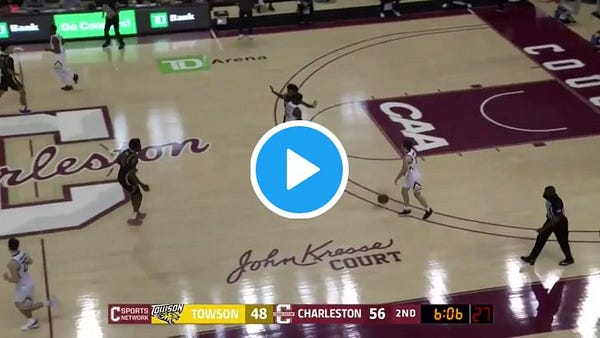

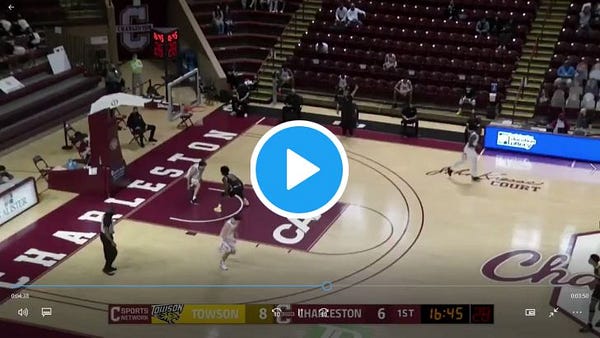
What makes Jasper’s defensive motor even more impressive is the fact he played at least 35 minutes most nights for Charleston. From the opening tip to the final buzzer, he doesn’t let up on that end of the floor — even when he’s carrying a massive offensive load for his team.
Jasper will be an immediate defensive upgrade for Auburn, and he looks like he has the athleticism and IQ to hang with any backcourt players opponents will throw at him. Even when comparing his game to SEC competition, Jasper has a lot of traits that should translate well. He showcased it in an early-season matchup against North Carolina, as Oldham breaks down in this video:


During his three seasons at Charleston, Jasper squared off against top-100 KenPom teams UNC, Oklahoma State, LSU, Memphis, Wake Forest, VCU, Providence and Richmond in non-conference play. Facing SEC-caliber opponents won’t be a major culture shock to him, and overall experience matters a ton — especially in March.
In a way, Jasper is an ideal newcomer to put alongside Jabari Smith and Trey Alexander as the Tigers continue to build out their 2021-22 roster. All three players are comfortable at creating their own shot and scoring at all three levels of the floor. They also flash on the defensive end — Smith and Alexander more with blocks and steals, Jasper more with the lockdown coverage that doesn’t show up in the box score.
Auburn will still need to add more talent to the roster, as it has two free scholarships and could have even more, depending on the draft decisions from the likes of Cooper and Thor.
But Jasper figures to be a key part of Auburn’s rotation next season, whether he’s stepping into the starting lineup or occupying a versatile sixth-man role off the bench. For a Tigers team that was so young and had a couple of noticeable deficiencies a season ago, Jasper should be an important infusion of experienced talent who can help out right away.
Up next on The Auburn Observer: This is the last call for Aubserver Mailbag questions. Send in anything on your mind about Tigers football or basketball on Twitter @JFergusonAU or via email at the1andonlyJF@gmail.com.




